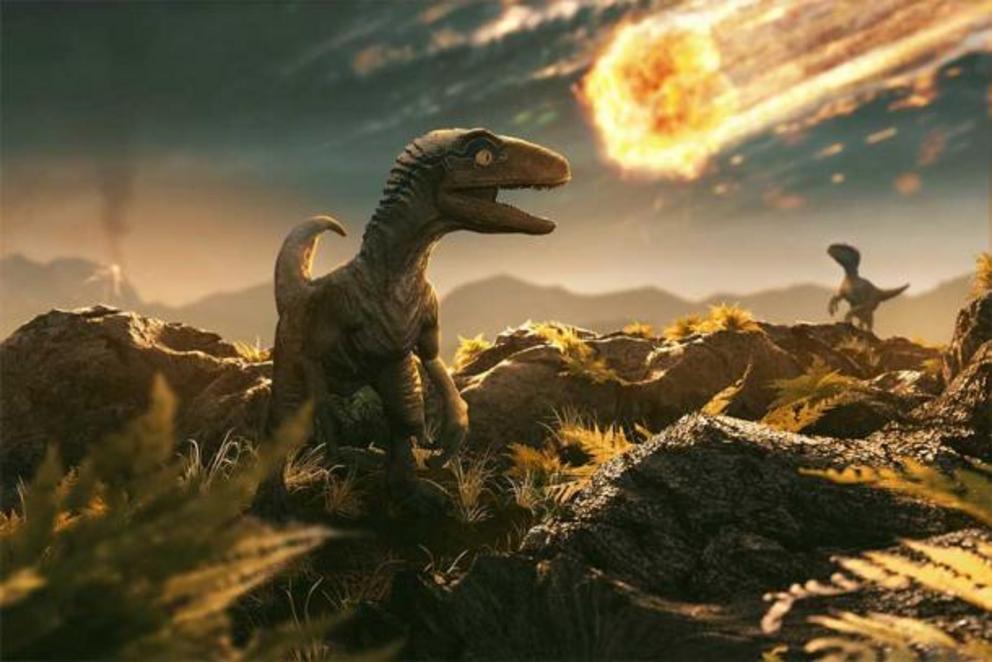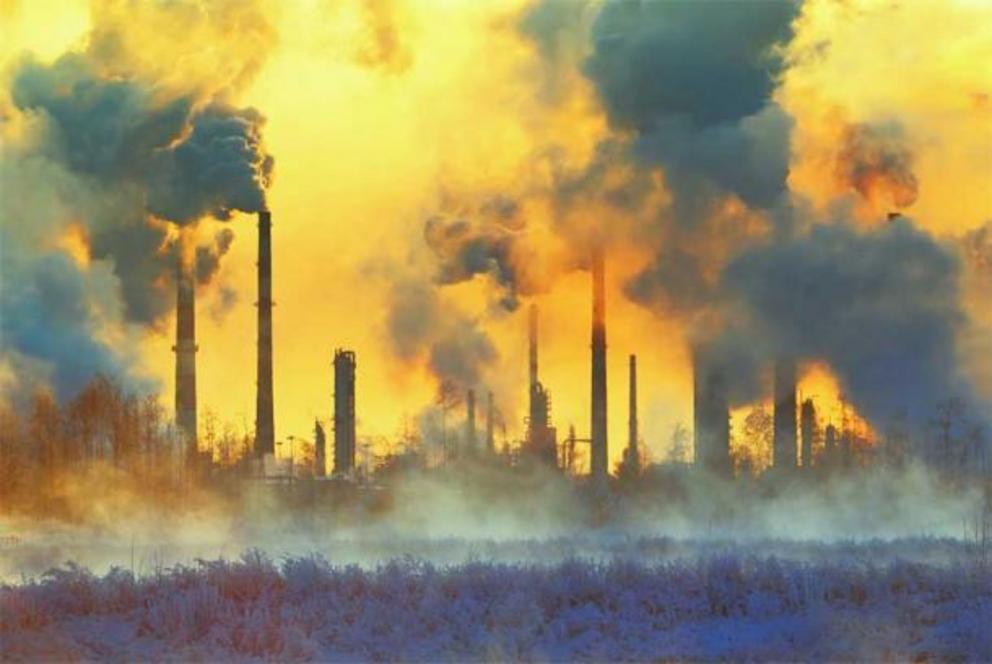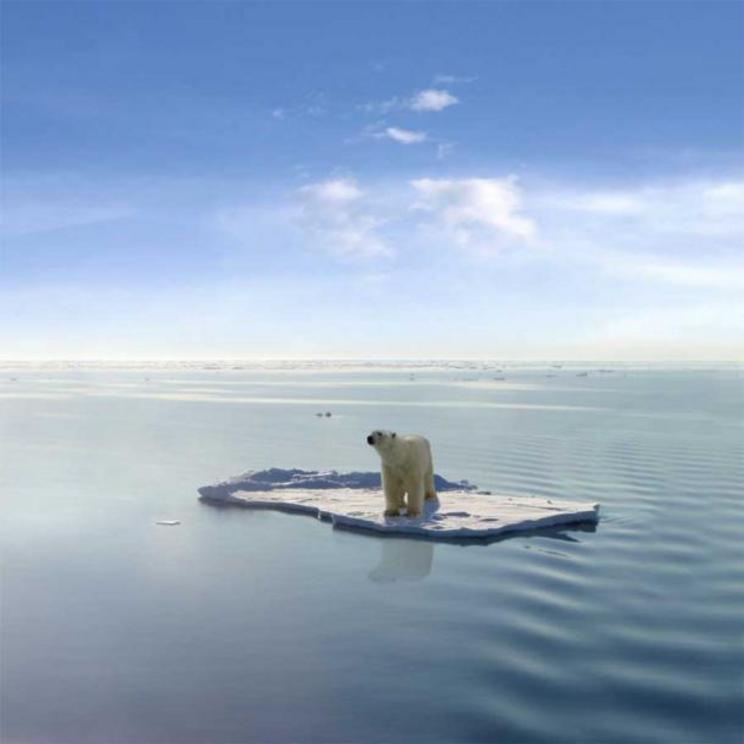Holocene extinction, anthropocene extinction, or merely the dust in the wind?
Top image: Most scientists blame the Holocene extinction on humans. But will humanity itself survive?
The Holocene extinction is considered by most scientists to be Earth’s sixth mass extinction event that has been occurring since the last ice age 11,700 years ago. But what exactly does it mean and what is the cause?
Holocene Extinction or Anthropocene Extinction?
The Holocene epoch often refers to the last 11,700 years, while the Pleistocene epoch covers the period between 2,580,000 to 11,700 years before present. The significant difference between the two is that while the Pleistocene was known for its megafauna and continual glaciations over the Earth, the Holocene was a period of gradual warming and glacial retreat right before the extreme climatic changes that have occurred from the 18th century onwards.
The Holocene is also associated with the rapid growth of humanity. Within the 11,000 years of the Holocene, humanity grew from hunter-gatherers to advancing agricultural cultures and finally into a powerful global community of international countries swarming with urban industrial cities and towns. But when discussing the Holocene epoch, there is another side that focuses on the environmental changes brought on by humanity. This is known as the Holocene extinction.
Most scientists blame the mass extinction known as the Holocene extinction on humans. So much so that in many academic circles, the term "Holocene extinction" is being replaced with the term "Anthropocene extinction". Many academics believe that humanity has caused the disruption of ecosystems, natural food chains, and altering landscapes. Concern grows as the human population, and planetary temperatures rise, which will undoubtedly cause further mass extinction to occur. During the time humanity has been present on planet Earth, the process of species mass extinction has sped up from thousands of years to mere decades.
In the last 100 years, a staggering 543 vertebrate species were wiped from the face of the Earth. According to Anthony Barnosky, a paleobiologist at the University of California Berkeley, in the next 40 years 30% of all species will be eradicated. Within 300 more years, if human populations and Earth's temperatures continue to rise, 75% of all mammal species will be extinct.
As the human race perpetuates and endures this new world extinction, questions arise as to whether we as a species will survive. Will there be any trace of our existence in the next epoch? In a more controversial exploration of this subject, could ancient civilizations of prehistoric species have been the reasons for the previous extinctions on Earth?
In the words of astrophysics researchers Gavin Schmidt and Adam Frank in their academic thought experiment titled The Silurian Hypothesis (named after the famed Dr. Who television series) humanity is the only known species to have reached a form of industrial civilization. They note that this civilization with means of mass production is currently only 300 years old, which remains temporally minute compared to the existence of life on Earth.
With such advancements made by Homo sapiens, Schmidt and Frank postulate that other species could have developed civilizations millions of years in the past. If one were to take this thought experiment further, could these potentially more advanced ancient species have died out due to causing their own extinction events?
 Earth has experienced five mass extinctions before the current Holocene extinction, including the Cretaceous-Tertiary extinction which scientists believe saw a meteorite wipe out the dinosaurs.
Earth has experienced five mass extinctions before the current Holocene extinction, including the Cretaceous-Tertiary extinction which scientists believe saw a meteorite wipe out the dinosaurs.
The History of Mass Extinction Events On Earth
The textbook definition for extinction is defined as the dying out of a species. Earth has experienced five mass extinction events that have claimed the lives of billions of species over the last 3.5 billion years. The sixth-largest extinction event is currently taking place while you’re reading this article, and many scientists believe we humans are responsible for it.
Barnosky believes that life first evolved billions of years ago and flourished, diversified, and transformed the world into what it is thanks to a natural balance between the genesis of a species and its extinction. Writer Gaia Vince discusses extinction as a naturally occurring phenomenon responsible for the culling of 99% of 4 billion species that have existed on Earth. Although the demise of a species is never good, extinction is sometimes essential for other species to emerge and thrive. With each cataclysmic event, new life emerges, so much so that most of the life that exists today results from 75% of older species going extinct.
Each extinction event on Earth affected and changed the world, making it almost unrecognizable. The first event was known as the Ordovician-Silurian Extinction which occurred some 440 million years ago. In this event, it was the demise of millions of small marine organisms that died due to intense global cooling and a reduction of sea levels.
The second event was the Devonian Extinction about 365 million years ago, which was yet another global cooling which brought about the the formation of glaciers and the further reduction of the sea level.
The third was the Permian-Triassic Extinction some 250 million years ago, which was believed to be the largest mass extinction of vertebrate species caused by global warming, leaving many species unable to breathe Earth's changing air.
The fourth extinction was known as the Triassic-Jurassic Extinction which took place 210 million years ago. The demise of terrestrial vertebrates occurred due to massive and widespread volcanic eruptions that increased atmospheric CO2 and acidified its oceans. This resulted in the death of 76% of all life on Earth.
The fifth extinction was the Cretaceous-Tertiary extinction known to have occurred 65 million years ago after a large meteorite wiped out all the dinosaurs from existence. Upon impact, the meteorite pushed over a million tons of ash and debris that blotted out the sun for several years and led to an endless winter that eventually thawed.
Each devastation, however, birthed a new world ripe for the surviving organisms to flourish. Without these extinctions, the human species itself may have never developed. But as the Holocene, or Anthropocene epoch continues, is humanity the final harbinger of death for all life on Earth?
 Human technology, civilization and pollution have been charged with causing the extinction of many species throughout the so-called Holocene extinction.
Human technology, civilization and pollution have been charged with causing the extinction of many species throughout the so-called Holocene extinction.
Humanity and the Anthropocene Extinction
As mentioned above, the Anthropocene is strongly associated with the age of humanity. Humanity shaped, manipulated, and exploited the environment and its resources. These changes are linked to the rapid decline in biodiversity at an alarming rate. Humanity's continuing advancement in technology and civilization, correlates to the disappearance of species such as humanity's close primate relatives and the remaining megafauna which humanity finds essential for consumption.
Although humanity is becoming infamously associated with the demise of species, humanity has successfully improved populations of certain species that have been dubbed important. Such species consist of cows, crops, dogs, maize, chickens, and certain scarce endangered species. As human civilization advances further it has become self-aware, recognizing the devastation that is occurring.
Research regarding humanity's effects on ecosystems has been examined with Dr. Patrick Von Kirch in his study of the Polynesian islands and the alterations to diverse islands. Kirch termed these islands "mini Earths”, to which the scale of indigenous animal extinction was measured in the archaeological record along with the emergence of human domesticated animals such as dogs, pigs, and chickens.
In his study, Kirch analyzed the speed of human settlement in an environment and how rapidly it is adapted for human habitation. This was used as research for understanding the effects humanity has in association with climate change and settlement. With growing studies similar to Von Kirch, many others have started to question humanity's role in the Holocene extinction / Anthropocene extinction event, especially as more animals disappear in the coming years.
Within the Galapagos and the Polynesian islands, conservationists have adapted their methods. The previous belief in restoring ecosystems to a prehuman state is considered outdated. Now the goal is to reshape humanity's place as essential in establishing novel ecosystems that promote co-habitation and sustainability for all endangered and protected regions. After all, it is inevitable that humanity will encroach and change every landscape it inhabits. The difference lies in generating a shift in perspective from human-centric objectives to the ability to learn to coexist with animals affected by humanity's presence.
As researchers Schmidt and Frank noted in their work, since the mid-18th century humans have produced 0.5 trillion tons of carbon emissions in the form of burning coal, oil, and natural gas. This is substantially faster than the amount which would have been released from natural occurring phenomena.
Depending on which beliefs one may accept regarding the subject of extinction, humanity may not only be heading for, but also creating, its own demise. This is why many researchers wish to rename the Holocene extinction as the Anthropocene extinction. So if such an event were to happen, once humanity has exhausted Earth's resources and the atmosphere is made too toxic to sustain human life, would any traces of humanity be left behind?
Will Traces of Humanity Remain After the Holocene Extinction?
Schmidt and Frank explored whether the remains of a 21st century industrial human civilization would leave behind traces in the fossil record. Their aim was to understand which methods could be used to identify possible ancient industrial civilizations millions of years in the past. They focused on the physico-chemical tracers that could exist for previous industrial civilizations based on how humanity's advanced civilizations have chemically altered the current terrain. One point Schmidt and Frank discuss is the paradox of the anthropogenic footprint on the geological timescale:
“…The longer human civilization lasts, the larger the signal one would expect in the record. However, the longer a civilization lasts, the more sustainable its practices would need to become in order to survive. The more sustainable a society, the smaller the footprint on the rest of the planet… therefore, the less of a signal will be embedded in the geological record… and self-limiting on a relatively short timescale…” (Schmidt and Frank 2019).
Schmidt and Frank grimly conclude that a species as short-lived and as rapidly progressing as the human race, would not be widely represented in the fossil record. Tools created that were not lithic or made of noncorrosive materials would not be preserved for the future. This theoretical speculation is also based on an analysis provided by Zalasiewicz, which stated that future archaeologists would be lucky to find even 1% of empirical evidence of urbanization from the 21st century due to common practices and materials currently being used by modern civilizations.
Even though plastics remain indefinitely, their structural integrity fails and crumbles, leaving shards that cannot be put back together. Alas, their conclusion remains that the geological fingerprint of humanity during the Anthropocene epoch would not differ greatly from other geological records, and potential civilizations more than 4 million years old would leave little to no evidence of their existence. This means that even if ancient civilizations had existed millions of years in the past, there would be no trace of them whatsoever for us to study today.
 Scientists blame humans for climatic events which are leading to the extinction of many species, such as the polar bear, poster child for environmental action.
Scientists blame humans for climatic events which are leading to the extinction of many species, such as the polar bear, poster child for environmental action.
Humanity’s Last-Ditch Attempts at Redemption
Although the Holocene epoch gave rise to the advancement of human civilization, it is likely humanity itself that will lead to its own demise during a future Anthropocene extinction event. Since the last glacial maximum, humanity has carved our its existence during an ever-changing landscape. Once humanity gained stability in the form of agriculture and sedentary lifestyles, it was no longer the environment changing people, but people who changed the environment in order to thrive. As humanity advances through the Anthropocene, it begins to question its own civilization's mortality and whether its legacy will be remembered after we are gone.
Yet, as the Holocene/Anthropocene extinction reaches its apex, humanity is only now beginning to develop better techniques for bringing back long-extinct animals, such as the megafauna of the past. If the current expense involved in these types of scientific advances drops, then the return of lost animals such as the dodo, the passenger pigeon, and the woolly mammoth may become a reality within the next century.
Although this provides hope in restoring the immense devastation to the biodiversity of Earth, we may still be too late. In its last-ditch effort to seek redemption, could humanity restore the Earth and its biodiversity to how it once was at the beginning of the Holocene? Most likely not. The sad truth is, perhaps, that humanity will leave behind less than 1% of its achievements, with only lithics and non-corrosive materials remaining to tell the tale.
Or perhaps after the Holocene extinction humans will be completely forgotten within the geological record, written off by future species as nothing more than yet another naturally occurring phenomena which led to the sixth mass extinction of mammalian life on Earth. If we are not the first to vanish from the historic record in this way, maybe we can learn from this shared history by analysis of other possible civilizations from millions of years ago.

